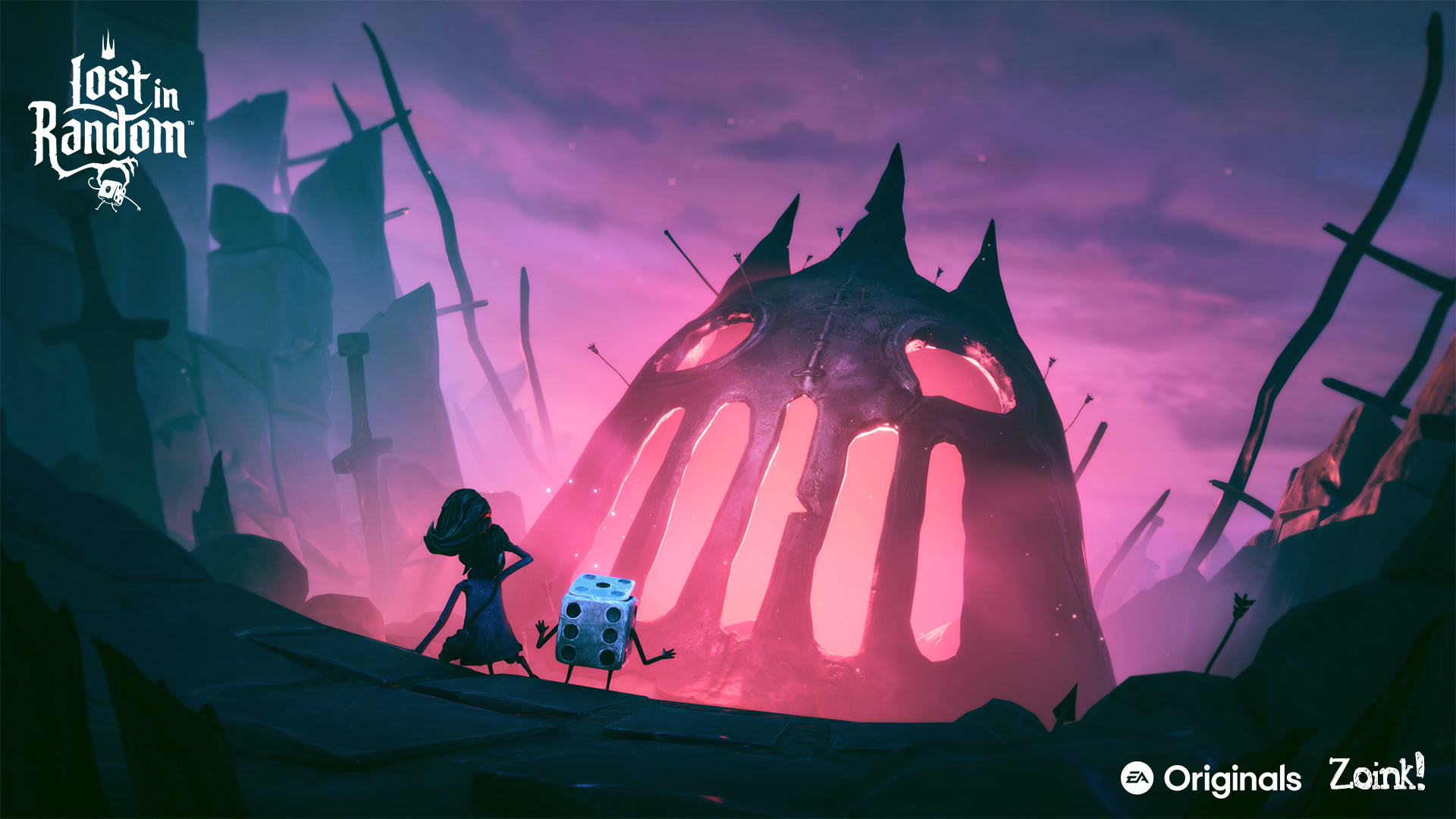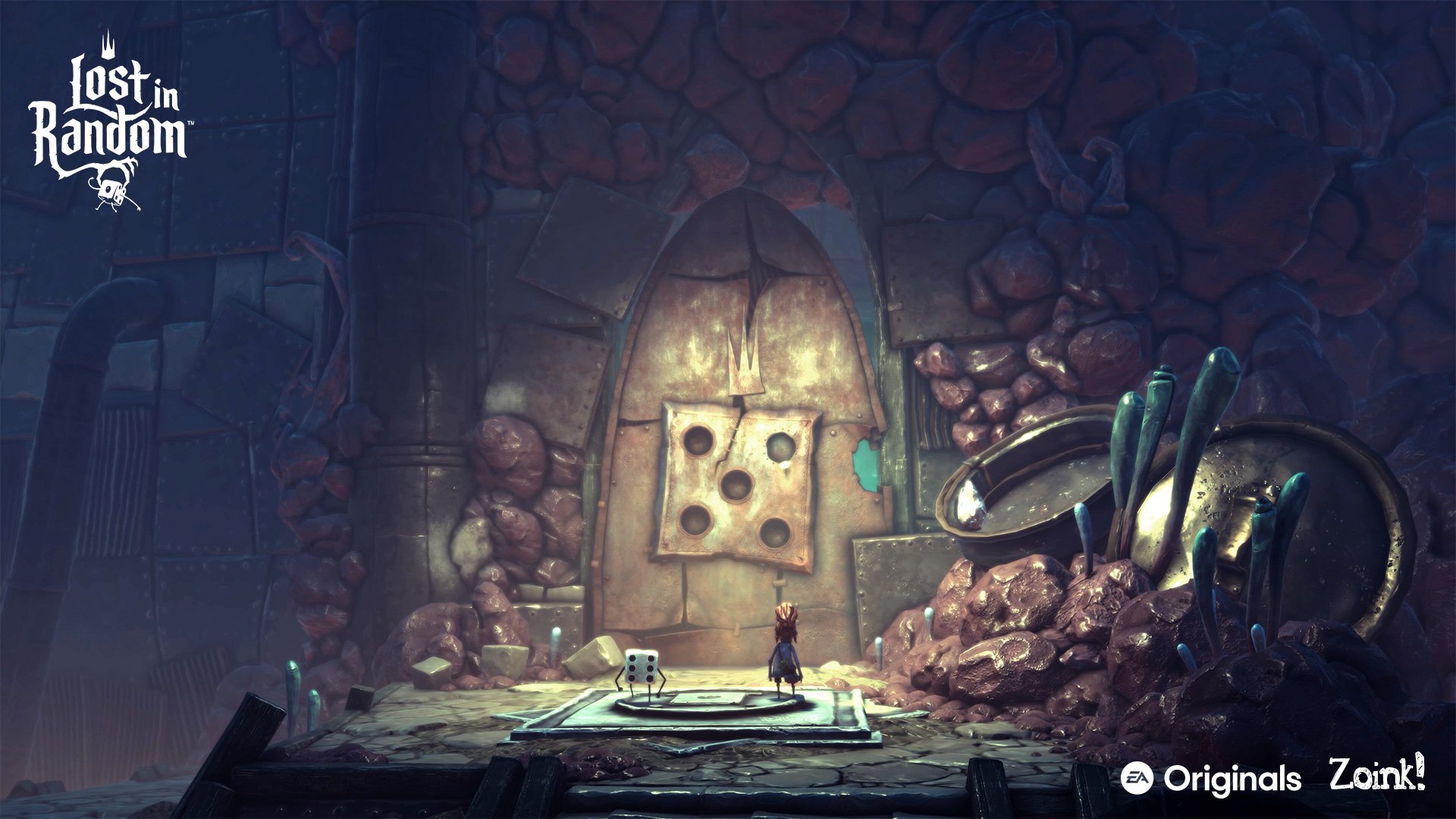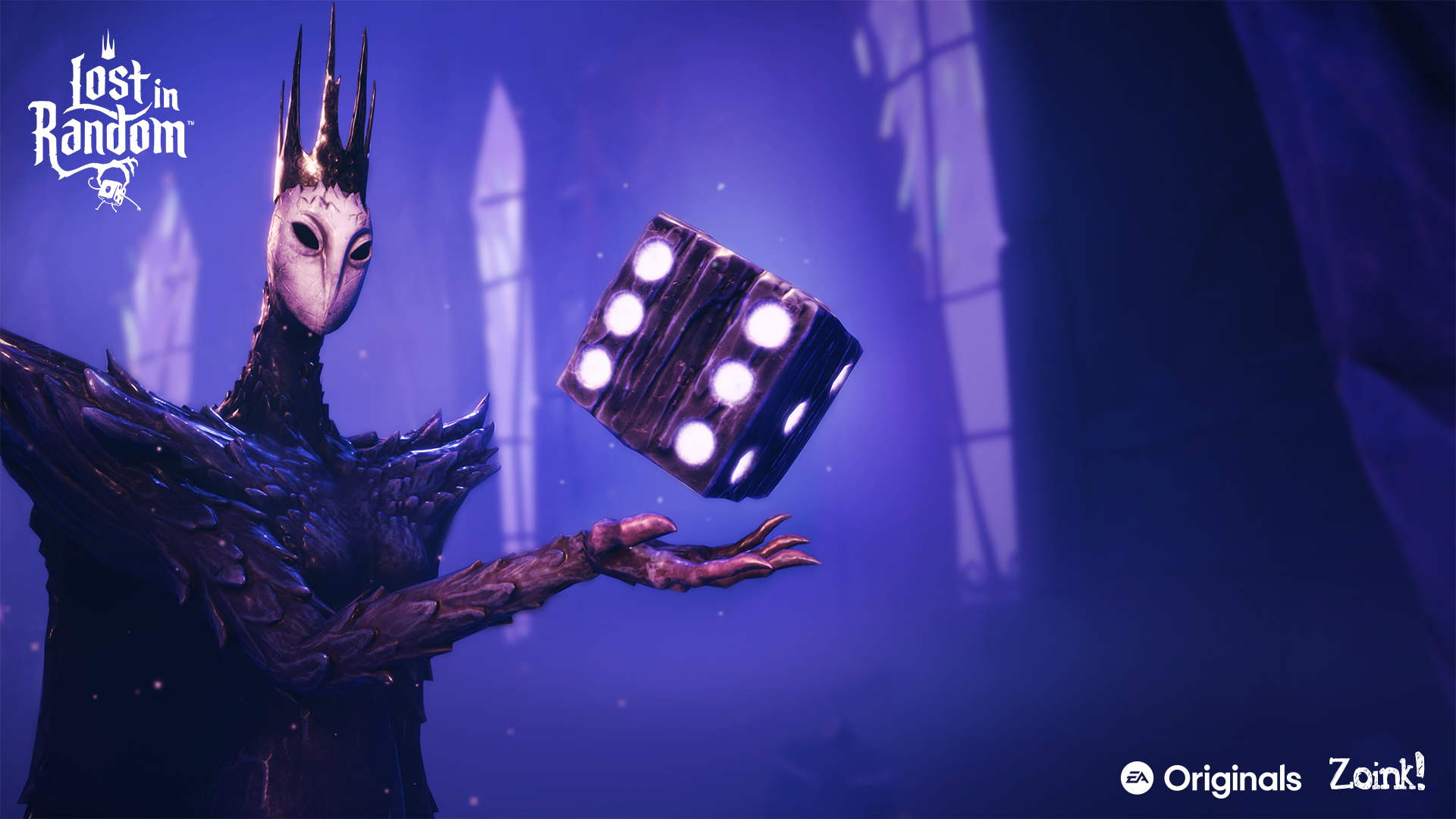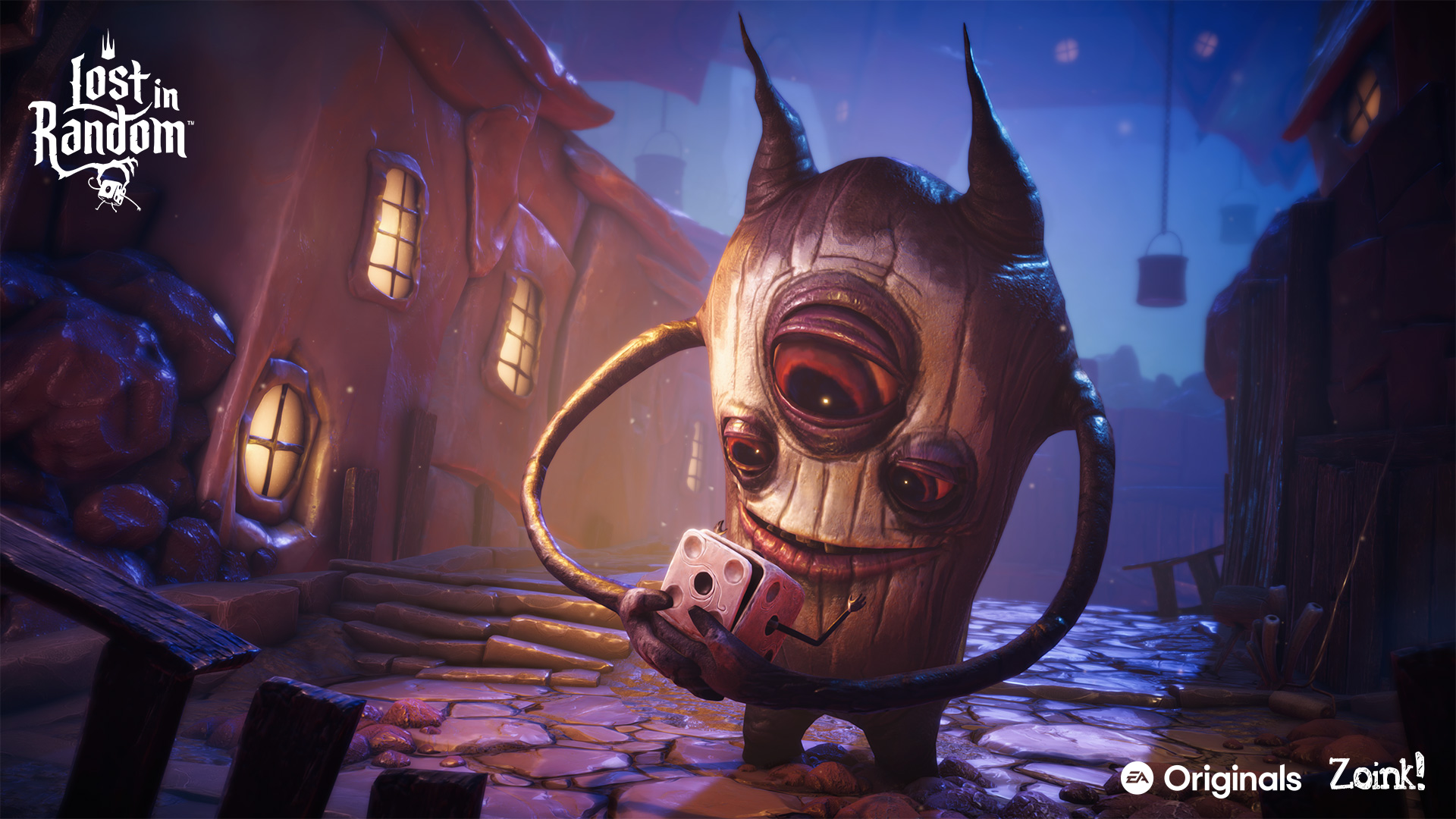When Jon Favreau was making the now-beloved Christmas movie, Elf, he said his intent was to create something that felt like it was already in the canon of Christmas stories. He wanted Buddy the elf to be as historically popular as Rudolph, Frosty, and other genre icons.
That was on my mind as I played Lost In Random. The board game-obsessed dark fairy tale feels more like an adaptation of a story we grew up with rather than a wholly new adventure — and that’s a good thing in my mind.
While it doesn’t get everything right, it does nail its sense of wonder and fills its world with characters who feel like they’re plucked right out of childhood storybooks.
Lost In Random Review: Playing Its Cards Right
In the world of Random, citizens are subjected to a lottery when they turn 12. Children are sadly quite likely to be separated from their families as they may be assigned by a six-sided die to live in any of the land’s six districts, each with its own aesthetic and purpose. One-town is the working-class port village, whereas Fourburg is the ritzy casino district home to high-rollers, and so on. Families are told to embrace this policy and all of its “wonderful” randomness.
Like protagonist Even’s sister, Odd, some end up in Sixtopia, where the formidable Queen resides in apparent tranquility. Meanwhile, her robot army keeps the rest of the colony in line by striking down revolts. Even isn’t able to resist the call to adventure when her sister is, essentially, kidnapped and thrown into Sixtopia with the queen, so she embarks on a rescue mission through the elaborate districts one by one.
The first thing you’ll likely notice about Lost In Random is its remarkable art style. Since its reveal, many have fairly likened it to a Tim Burton movie. Tightly mapped corridors are encapsulated by permanently crooked buildings, and any district’s denizens may look like fish with legs, wooden dolls, or just best described as monsters.
The game is beautiful, and it must be the most ambitious EA Originals-published game yet. That goes beyond its art, too. What really impresses about Lost in Random is its size and scope. On her journey, each district introduces a main quest, but also several side quests and NPCs that are fully voiced and exist merely to flesh out the world. A completionist’s run of the game would take around 20 hours. This is much more than the Alice: Madness Returns you may think of it as at first glance.
In fact, other than a shared interest in dark fairy tales, this really isn’t anything like that past EA game. The third-person adventuring plays out in unique combat scenarios that combine classic third-person melee attacks with a deckbuilding system. To stay ahead of her robot enemies, Even will collect energy by slingshotting their weak points before she can roll her die, named Dicey, and play cards on the battlefield that give her buffs, place hazards, heal her, and more.
By the end of the game, a diligent collector will have dozens of cards, each of them offering unique boosts to Even’s arsenal. This system could’ve been even better if enemies evolved more with a player’s deck. Even as they come in various shapes and sizes and have their own attacks, no combat encounter ever really evolves past the cadence you’ll learn early on.
For example, the game lets you draw your cards before you have a full hand of five earned, but I never saw a reason to do so. It’s easy enough to dodge the bots while you collect energy until you obtain a full hand. This maximizes your chances to draw the cards you want, but it also means the most effective tactics become quite rote quickly.
You’ll do that several times over throughout any combat scenario, be it with a few grunts or a mighty boss. To its credit, this system does feel like a user-friendly barrier of entry. I’ve never been much for card-collecting games, but in Lost In Random, the blend of placing cards and performing real-time melee attacks is much more welcoming than some of its more dizzying counterparts.
Lost In Random is never quite a platformer, per se. After all, you don’t even have a jump button. But Random’s twisting architecture and fantasy world mean you’ll find yourself high atop platforms, balancing across narrow beams, and puzzle-solving using your and Dicey’s bodies in ways that are of a piece with platformers.
These moments are best used to see more of the game’s lovely art direction, though, with an in-game map that doesn’t reveal your current location, navigation can sometimes get messy and frustrating in the game’s no-straight-roads design.
Lost in Random Review — The Bottom Line
Pros
- Deckbuilding-infused action combat makes for an interesting mix
- A lovely world full of colorful characters
- A dark fairy tale story that feels like it’s always been here
Cons
- Combat doesn’t evolve much over the game’s 15+ hours
- Navigation can be messy
Lost in Random is driven by its story above all else, and in that way, it’s really delightful. While early districts are almost ghost towns, the hustle and bustle of Random reveals itself in later hubs and gives the project an air of outperforming its budget.
Zoink! Games has made a lot of games that have their own fandoms, but none have ever shot for the moon as much as this one. Even if it doesn’t achieve all it sets out to do, its ambition is obvious, and its world is memorable.
[Note: Zoink! Games provided the copy of Lost in Random used for this review.]













Published: Sep 12, 2021 11:31 am